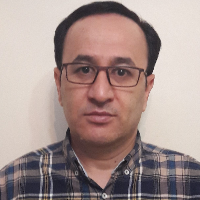Simulating the spatiotemporal changes of forest extent for the Chehelchay watershed (Golestan province), using integrated CA-Markov model
Author(s):
Abstract:
The importance of land-use/ land-cover (LULC) as a dynamic factor and effective on environmental conditions, makes it necessary to get precise quantitative and qualitative information from it and to identify its changes through short time periods. Modeling LULC changes provides useful information for better understanding of the changes process, determining driving forces and predicting areas under change conditions. In this study, the integrated CA-Markov model was used to simulate forest cover changes in the Chehelchay Water catchment at minodasht area of Golestan province of Iran. CA-Markov is a combined Cellular Automata/Markov chain land cover prediction procedure that adds an element of spatial contiguity to the stochastic Markov chain analysis. Landsat images of 1987 and 2009 and land-use map of 2001 were used to derive forest extent maps of the Chehelchay Water catchment and characterize changes through time. To investigate the relationships between forest extent changes and some environmental and human-related factors and to produce transition suitability maps, a logistic regression analysis was applied between forest extent changes as response variable and the deriving factors as explanatory variables. Future LULC types for 2009 were then predicted using CA–Markov model, based on the land-cover changes between 1987 and 2001. In order to evaluate the modeling results, prediction for 2009 was compared with the observed 2009 land cover map. The computed accuracy coefficient indicated high efficiency of CA-Markov for simulating forest extent changes in the Chehelchay Water catchment (Kappa = 0.92). Finally, assuming current trends in LULC changes continue, forest cover map for the year 2020 was developed. The results indicate that there will be a notable decrease in forest area
Keywords:
Language:
Persian
Published:
Iranian Journal of Forest and Poplar Research, Volume:20 Issue: 2, 2012
Page:
273
https://magiran.com/p1127830
مقالات دیگری از این نویسنده (گان)
-
Assessment and Prioritization of Urban Development Sustainability Using a Hybrid Approach: Group Fuzzy BWM and GIS
Farzaneh Forouzesh, Seyed Massoud Monavari *, Abdolrassoul Salmanmahiny, Mmaryam Robati, Razieh Rahimi
Environmental Researches, -
Assessment and Spatial Modeling of Land Subsidence Hazard Using the LiCSBAS Model and Random Forest Algorithm (Case Study: Marvdasht Kharame Plain)
M. Khajeh, C. B. Komaki*, M. Rezaei, V. Sheikh, L. Ebadi
Journal of Hydrology and Soil Science, -
Design and Construction of an Automatic Discharge and Sediment Load Monitoring Equipment
Hasan Rezaei Moghadam*, , Maryam Azarakhshi, Mohsen Hosseinalizadeh, Jahangir Mohamadi
Journal of Watershed Management Research, -
The Analysis of Scenario Planning in Foresight and Frameworks of Quantitative and Qualitative Methods in Futures Studies
Elham Sedighi *, Abdolrassoul Salmanmahini, Hassan Daliri, Brian D. Fath, Seyed Hamed Mirkarimi
Journal of Strategic Management and Futures Studies,



